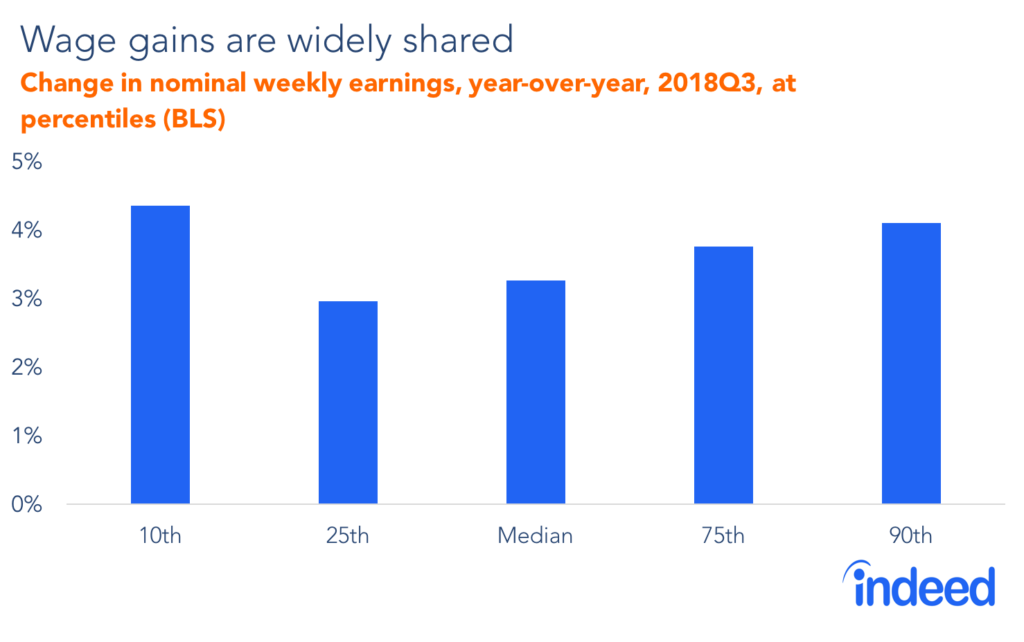As the US Economy Keeps Growing, Real Wages Keep Rising for Everyone
AEIdeas
December 04, 2018
What happens when an economy keeps expanding year after year — even if industry is growing more concentrated and trade deficits stay big and unions aren’t what they used to be? Well, this is what happens, via the Indeed Hiring Lab:
More people returned to work in 2018. The unemployment rate fell from 4.1% in December 2017 to 3.7% in October 2018 — well below what the Federal Reserve thinks unemployment will be in the long run. A broader measure that includes labor force re-entrants — the ratio of employed people of prime working age (25 to 54) to their population — rose from 79.1% to 79.7%. And the share of workers involuntarily working part-time fell from 3.1% to 2.8%. Even better, the tightening labor market brought rising wage gains in 2018. Wage growth for private-sector workers topped 3% this year and looks to continue gaining next year.

And with inflation low, those are real wage gains, folks. One other point I wanted to highlight from the report by Martha Gimbel and Jed Kolko: Don’t expect monthly jobs growth to stay at that 200,000 or so level we’ve grown used to in recent years. That is going to fade, resulting in slower GDP growth going forward:
Second: the population is aging and the working-age population is growing slowly. Between now and 2030, the prime-working-age population of 25 to 54 year-olds is projected to grow just 0.5% per year. That’s much slower than in the 1970s, 1980s, and 1990s, when working-age population growth averaged 1.8% per year. The economy needs only between 60,000 and 70,000 new jobs a month to keep up with this slowly growing population — way below the 200,000 per month range of recent years. The job market could sustainably grow faster than 60-70,000 per month if baby boomers delay retirement, working-age labor force participation rises, or immigration increases.


